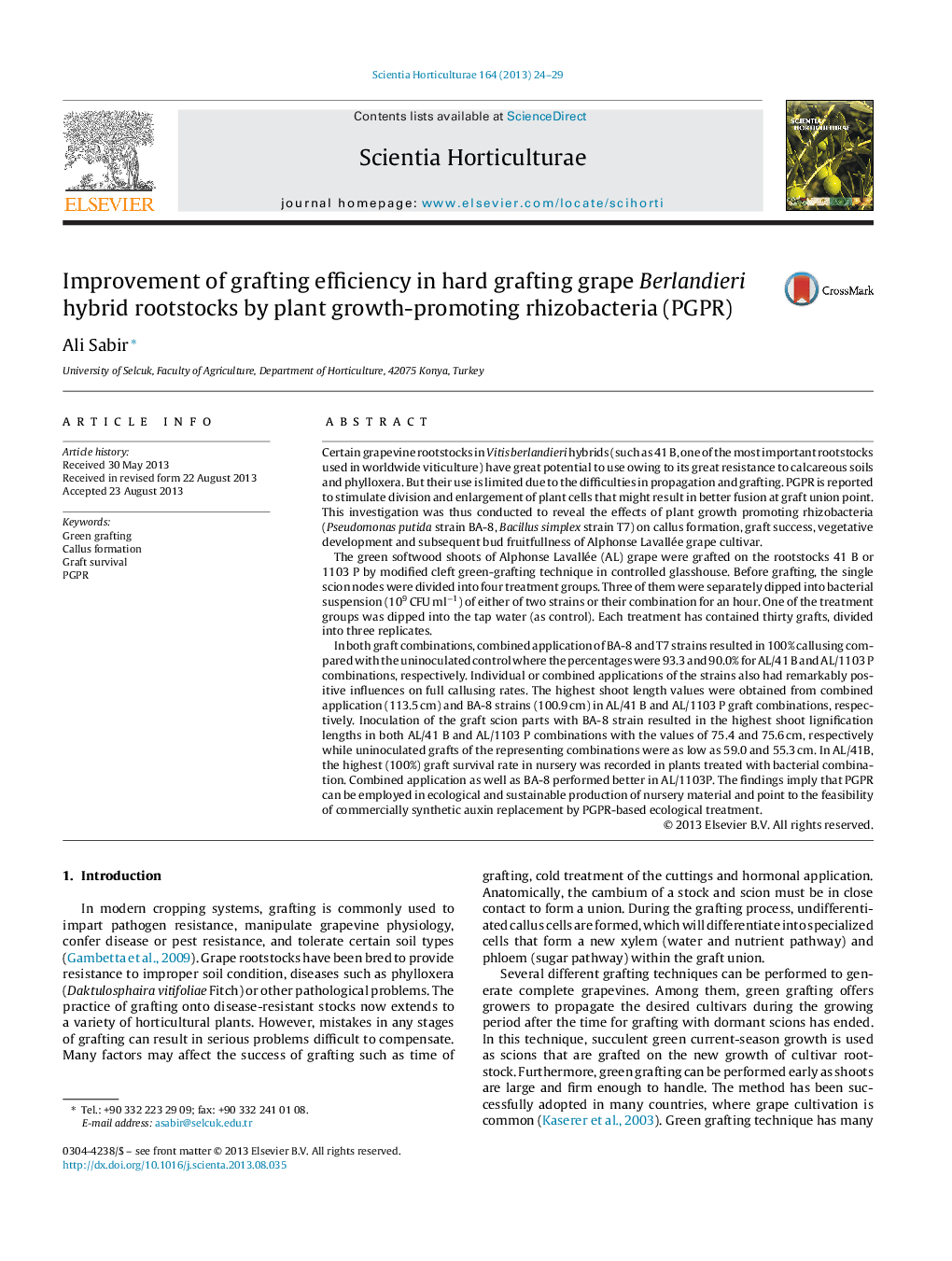| کد مقاله | کد نشریه | سال انتشار | مقاله انگلیسی | نسخه تمام متن |
|---|---|---|---|---|
| 4567036 | 1628834 | 2013 | 6 صفحه PDF | دانلود رایگان |

• BA-8 and T7 bacteria application resulted in 100% callusing in grape grafts.
• Bacteria strains also clearly enhanced the vegetative growth of grafted plants.
• Grafted plant survival rate in nursery was higher in PGPR-inoculated grapes.
• PGPR can be employed in ecological and sustainable production of nursery material.
• PGPR use revealed promising results for replacement of the use of synthetic auxins.
Certain grapevine rootstocks in Vitis berlandieri hybrids (such as 41 B, one of the most important rootstocks used in worldwide viticulture) have great potential to use owing to its great resistance to calcareous soils and phylloxera. But their use is limited due to the difficulties in propagation and grafting. PGPR is reported to stimulate division and enlargement of plant cells that might result in better fusion at graft union point. This investigation was thus conducted to reveal the effects of plant growth promoting rhizobacteria (Pseudomonas putida strain BA-8, Bacillus simplex strain T7) on callus formation, graft success, vegetative development and subsequent bud fruitfullness of Alphonse Lavallée grape cultivar.The green softwood shoots of Alphonse Lavallée (AL) grape were grafted on the rootstocks 41 B or 1103 P by modified cleft green-grafting technique in controlled glasshouse. Before grafting, the single scion nodes were divided into four treatment groups. Three of them were separately dipped into bacterial suspension (109 CFU ml−1) of either of two strains or their combination for an hour. One of the treatment groups was dipped into the tap water (as control). Each treatment has contained thirty grafts, divided into three replicates.In both graft combinations, combined application of BA-8 and T7 strains resulted in 100% callusing compared with the uninoculated control where the percentages were 93.3 and 90.0% for AL/41 B and AL/1103 P combinations, respectively. Individual or combined applications of the strains also had remarkably positive influences on full callusing rates. The highest shoot length values were obtained from combined application (113.5 cm) and BA-8 strains (100.9 cm) in AL/41 B and AL/1103 P graft combinations, respectively. Inoculation of the graft scion parts with BA-8 strain resulted in the highest shoot lignification lengths in both AL/41 B and AL/1103 P combinations with the values of 75.4 and 75.6 cm, respectively while uninoculated grafts of the representing combinations were as low as 59.0 and 55.3 cm. In AL/41B, the highest (100%) graft survival rate in nursery was recorded in plants treated with bacterial combination. Combined application as well as BA-8 performed better in AL/1103P. The findings imply that PGPR can be employed in ecological and sustainable production of nursery material and point to the feasibility of commercially synthetic auxin replacement by PGPR-based ecological treatment.
Journal: Scientia Horticulturae - Volume 164, 17 December 2013, Pages 24–29